The Super Bowl. In America – it’s the event. Massive advertising budgets, A-list celebrity half-time performances, and high-octane media coverage all surround this larger-than-life annual celebration of all things classically America.
For Americans, it’s one of the greatest sporting and cultural spectacles of the year – a chance to celebrate the excitement, passion, and culture of a sport and event that has long united the nation.
For the English – it’s an impressive but bewildering display of oversized stormtrooper-esque men in armoured helmets inexplicably passing a misshapen ball with their hands rather than their feet. Is it a touchdown, or a home run? And why is Rhianna suddenly on the pitch? We may never know…

However you feel about the Super Bowl, for advertisers in the US – it’s the Big One. Advertising costs skyrocket as brands compete to capitalise on the millions of eyeballs all watching the ads that regularly roll across the screens during the frequent commercial breaks.
For brands – it’s a rare chance to engage with the spirit of the whole nation, to be part of the unifying effect the Super Bowl has across America, and to temporarily tap into the heart of the zeitgeist.
The Brands in Question…
This year, as ever, multiple brands jostled for attention during the breaks – each bringing their own campaign, angle, and – crucially – guest celebrity. From a giant Pete Davidson opening a fridge in Hellman’s campaign ad, to Adam Driver donning an Agent Smith Matrix style persona for the (in our opinion truly awesome) Squarespace ad, the celebrities were out in force as ever.
4 key brands threw their hats – and budgets – into the ring this year. Hellmann’s, M&Ms, Squarespace, and The Farmer’s Dog. Each had their own unique approach, message, and tone. But how did the ads actually land with people?
Did the colossal budgets and celebrity spokespeople actually end up generating the desired result? Namely – the right affinity, emotions and engagement in people? How did the ads actually, when it came to it, make people feel?

Using Creative Neuro to Unlock Consumer Reaction
To find out, we ran each ad through our digital Creative Neuro testing solution, showing the ads to a sample of US consumers across social media.
Utilising eye tracking, facial recognition, and implicit reaction technologies, we measured and analysed people’s emotions, reactions, and engagement levels to each scene and frame of the ad, to uncover how the ads really made people feel, and if – ultimately – they hit a home run (home run is the football one right?…)
So – what did we uncover?
Hellmann’s – A Fridge too Far?…
Watch the ad before getting into the results.
Hellmann’s campaign this year enlisted the help of not one, but three celebrities in their Super Bowl ad. Featuring the shrunken forms of John Hamm and Brie Larson on a shelf stuck inside a fridge, and concluding that they must be ‘cheese / brie and ham(m)’ for lunch, Pete Davidson then looms in, opening the door of the fridge to eat them. Ridiculous? Definitely. Effective?
Well – let’s take a look at the results…
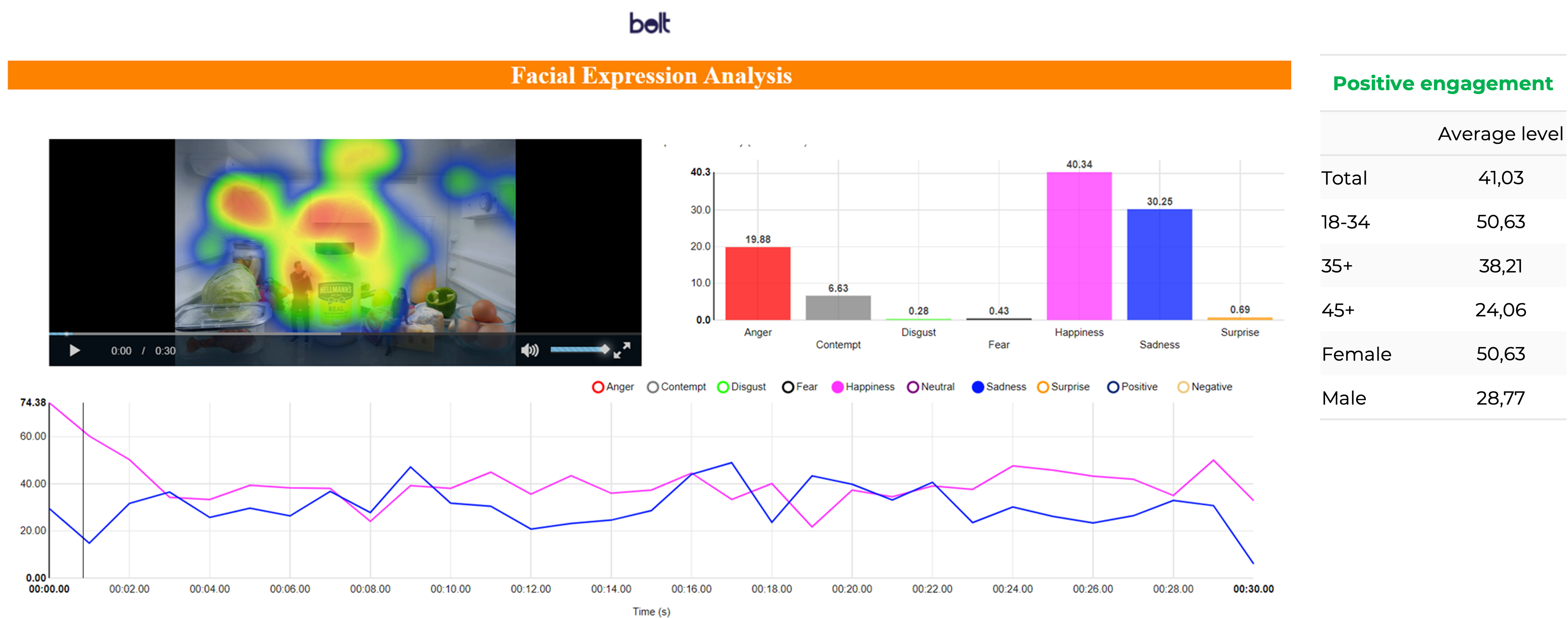
With a positive engagement score of 41.03, it appears that many Americans do like a dose of the ridiculous with their Super Bowl commercials. Punching in at above industry average scores, it seems the Hellmann’s ad was a hit – mainly among 18-35 year olds and females. Pete Davidson clearly delivering there then…
However the results also show that Pete Davidson’s inclusion was divisive – his appearance saw a spike of happiness in some – but anger in others.
While strongly engaging one demographic, it seems Hellman’s have also partially alienated another. They may want to take note and look to a campaign that successfully engages the male demographic more as well next time.

Squarespace – The Singularity (of Awesome…)
Adam Driver looking good in the ad.
Next up – Squarespace, with their (in our opinion) actually awesome ‘The Singularity’ Campaign. Featuring Adam Driver in full Matrix style Agent Smith getup, the ad plays on the idea of an infinity loop of ‘websites creating websites’ theme.
Creatively and playfully executed, did the unlikely meeting of Quantum Physics, Sci-Fi celebrity, and website host provider resonate with American audiences? Let’s take a look…
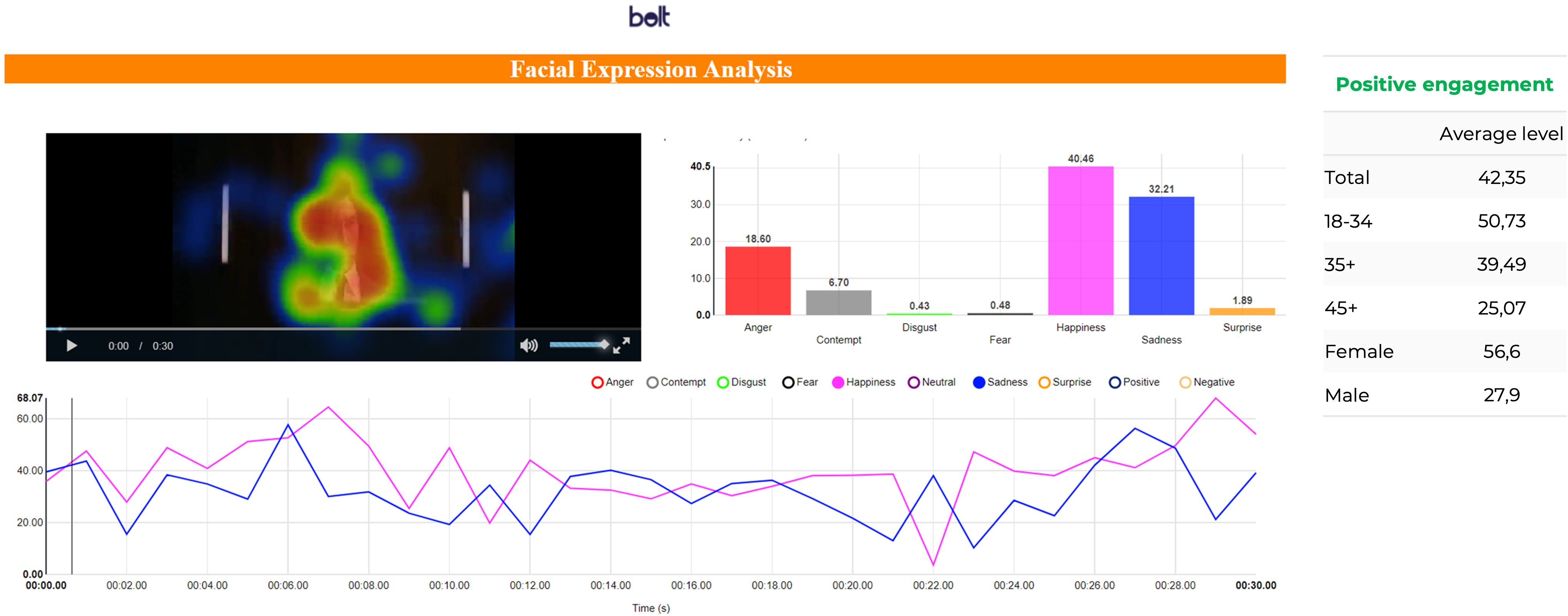
With the ad generating above industry average positive engagement scores, weighing in at an impressive 42.35 – it certainly seemed to resonate with the audience we tested it with – nudging ahead of Hellmann’s for overall positive engagement.
The ad seemed to resonate particularly positively with females – even more than the Hellmann’s campaign, as well as the 18-34 age range, perhaps picking up more on the Matrix trilogy references than their older counterparts.
And with Adam Driver’s ascent to international household name from his role in Star Wars as Kylo Ren role being more recent, it may not be a surprise that his involvement was more engaging for younger generations.
The Farmer’s Dog – ‘Forever’ Campaign
Can’t stop the tears at the end, will you? Here is the ad.
Farmer’s Dog – a raw dog food brand – and perhaps less of a household brand name than the others, weighed in with their own Super Bowl campaign this year.
The only ad not to rely on celebrity involvement, it’s a touching chronicle of a girl’s journey through her life to date with her constant companion – her chocolate labrador.
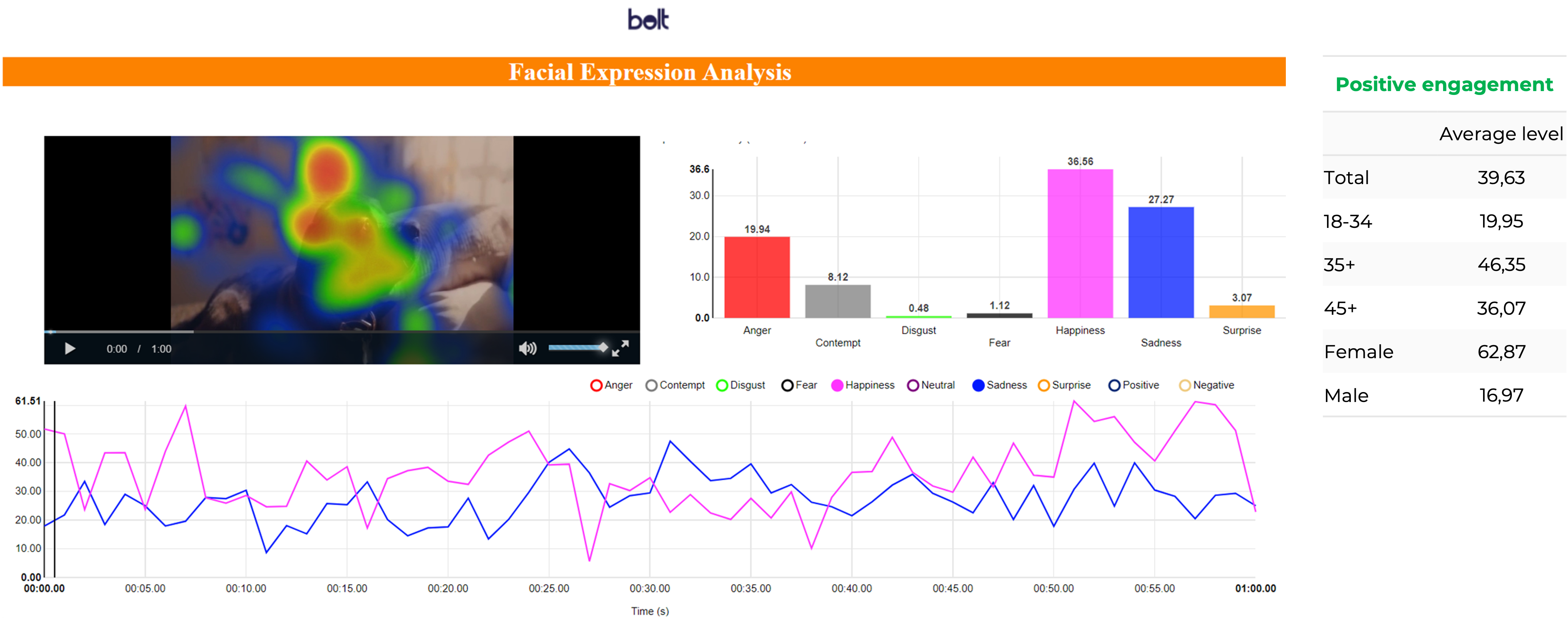
The sentimental and emotional tone of the ad seemed to resonate particularly well among females, as well at viewers between 35-45 years old, a similar demographic to the woman in the advert.
Emotional response analysis also showed the ad generated a high degree of sadness – intentional to a degree, as the ad is clearly aiming to pull on the nation’s heartstrings.
However, the ad received the lowest positive engagement score of any of the ads so far among males – at just 16.97, but by far the most among females, at a strong 62.87, making it the most polarising ad among the genders out of all the ads tested.
If this was Farmer’s Dog’s intended demographic to impact with this ad – then it was highly successful. But if their seeming alienation of males was unintentional, then they would do well to take note and focus on a more universally appealing campaign next time around.
But – the ad which actually generated the strongest overall positive engagement across all demographics, was….
M&M’s – ‘Wokecandies’ Controversy
Last but not least, the overall winner in terms of positive reaction – M&M’s, and the bizarre ‘‘WokesCandies’ Controversy’ surrounding it.
Their campaign this year was surrounded by a somewhat outlandish media controversy, with Fox News branding the relaunch of M&M’s ‘Spokescandies’ with newly characterised, more ‘inclusive’ characters of their well-known talking candies– as being a result of the encroachment of the ‘liberal agenda’ on M&Ms’ clearly much beloved candy marketing mascots.
In an (at first) seemingly related twist, M&M’s then unveiled their Super Bowl ads – containing no Spokescandies whatsoever, instead featuring Maya Rudolph, and a campaign centered around a comedic celebrity-based total rebrand to ‘Ma&Yas’, containing clams…
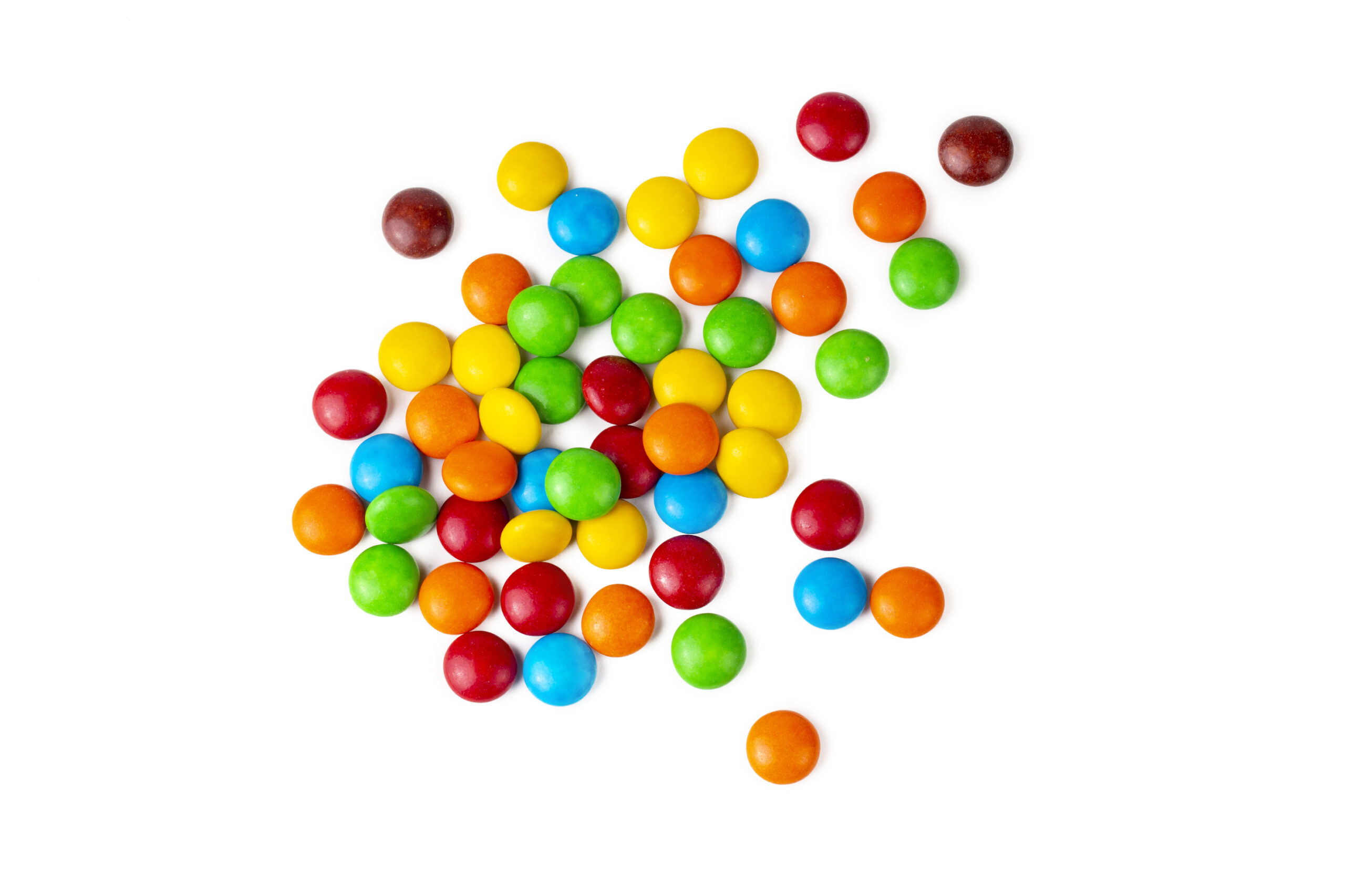
Initially speculated to be a capitulation to Fox News and a pole of the American political spectrum, in the end it was revealed to all be an elaborate marketing stunt, with the Spokescandies returning immediately after the ad. But it did serve to stir up some juicy controversy, spike conversation around M&Ms on social media, and maximise the attention the brand received nationally around their Super Bowl campaign.
Well played, M&M’s…
But how did the ad and campaign itself actually land with Americans?
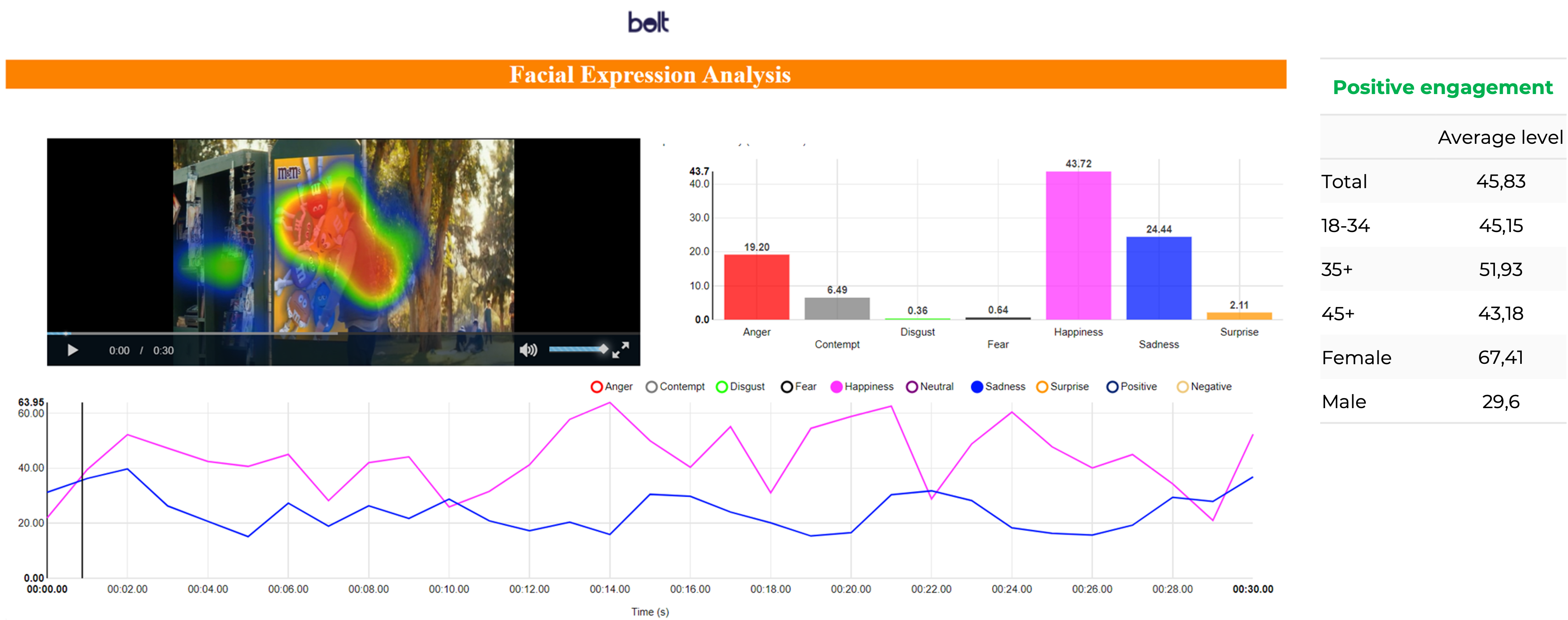 It appears that M&M’s gamble of wildly deviating from their established branding and ‘Spokescandies’ for their Super Bowl campaign this year paid off – with the ad receiving the most positive emotional score of all the ads analysed – with an impressive overall score of 45.83.
It appears that M&M’s gamble of wildly deviating from their established branding and ‘Spokescandies’ for their Super Bowl campaign this year paid off – with the ad receiving the most positive emotional score of all the ads analysed – with an impressive overall score of 45.83.
While less polarising and more popular with males than the Farmer’s Dog campaign, the M&Ms ad and the featuring of Maya Rudolph proved wildly popular with females, with positive engagement among women at 67.41, the most of any ads tested.
Positivity spiked in (to be fair pretty hilarious) scenes where seemingly unsuspecting members of the public are attempting to enjoy the new clam filled candies – and struggling.
It goes to show that – when it comes to seismic media and advertising opportunities and investments like the Super Bowl – stirring up a bit of controversy, deviating from branding norms and dishing up the unexpected (in this case, clams), can go a long way to maximising engagement, attention, and – ultimately – investment.
Creative Neuro: The Keys to Unlocking Reaction
So there you have it. Using Creative Neuro testing and analysis, we were able to get under the skin of people’s real, unfiltered emotional responses to four major campaigns in what is arguably the biggest advertising opportunity and event on the planet – and undeniably in America.
Choice of celebrity, emotional tone, and a bit of dishing up the unexpected all played a part in determining the success of the ads in terms of reactions and impact of the campaigns among different groups and demographics.
The insights gained – when provided scene by scene, frame by frame – as they are in our interactive dashboards, can be an invaluable tool to help work out exactly what resonated, with who, and why, as well as uncover what perhaps didn’t work so well across different groups.
The lessons learnt can serve to help optimise and steer future ads, campaigns, or launches – and ultimately, ensure future success for any brand looking to emotionally impact and engage audiences.
Want to know more?
Whether you’re looking to launch a new product or campaign, run a concept or claim test, or conduct a visual shelf test, our digital neuro-marketing solution can give you the keys to unlock the unconscious emotions, and reactions that your creatives are conveying and communicating to people – and ensure you’re maximising the effectiveness of you next launch or campaign.
Interested? To book a demo, just get in touch:
Book A Demo














